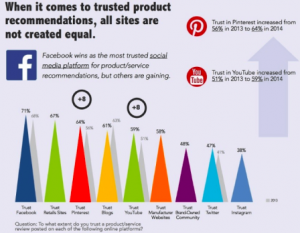You’ve probably heard it time and time again: don’t build your website for search engines. Instead, we’re told to build websites with the user experience in mind.
But what’s really the difference between the two? Can a positive user experience and effective search engine optimization (SEO) go hand-in-hand?
The answer is most certainly yes—with some balance. Your website should be easy for users to navigate and visitors should be able to quickly find what they’re looking for. And, perhaps most importantly, you want them to keep coming back for more.
The good news is that Google wants this too, so you don’t have to choose between making your website highly searchable or highly user friendly. After all, the goal of Google’s search algorithm is to help users find the best answers to their questions—both in information and in experience. Because of this, there are several different aspects of user experience that Google rewards in search rankings.
So, how can you appease Google and other search engines while creating a website that is built with web users in mind? It’s just a matter of striking the right balance.
5 Ways to Balance User Experience and SEO
1. Consider your website’s look and feel
When your website is visually appealing, easy to navigate, and informative, visitors are more likely to stick around longer. Once visitors know they can get a good user experience from your site, they’ll keep coming back to it as a future resource. This gives you multiple opportunities to interact with these individuals. With each touch point, visitors should build an understanding of your firm’s expertise, services, and capabilities.
Since Google takes the overall usability of a website into account, this can positively affect your site’s search visibility.
2. Avoid keyword stuffing
Yes, using keywords in your content is important to increase your website’s visibility within search engine results. But be cautious. Google’s search algorithm is sophisticated enough to know if you’re “stuffing” keywords into content and pages where the terms aren’t relevant or natural to the page.
In fact, their algorithm will actually penalize your website for using irrelevant keywords. Instead, use your title tags, headers, image alt tags and URLs to target specific keywords, then reuse the keyword a few times in the text where it makes sense.
As a good rule of thumb, remember this: keywords should just be a natural and seamless addition to the content topics you’re already writing about.
3. Update your website often
Doing a complete overhaul of your website regularly isn’t always feasible. But you should be regularly publishing new content and updating existing content, so that your web site remains relevant.
Remember that your audiences are likely changing and evolving. They may be facing different challenges and needs than just a few years ago. Conducting regular research on your prospects and clients is essential to inform how your firm and website needs to adapt to keep up.
Your website copy and content should speak to what buyers are looking for today. Add and update regularly so your website remains relevant and continues to appeal to your audience.
Most importantly, remember that you’re writing first for those prospects and for search engines secondarily.
4. Keep navigation simple
Users have a seemingly infinite amount of information at their disposal these days. Navigating a website should be a clear and intuitive process. Visitors that aren’t able to quickly find what they’re looking for will become frustrated and leave your firm’s website.
Have a thorough understanding of what your audiences are likely to look for and use that information to inform how you lay out your website’s navigation. Remain consistent with the location of your navigation, minimize the number of sections in your navigation, and keep the titles of each pathway clear so users know exactly what they’ll find when they click through.
And don’t forget to submit an XML sitemap to search engines. This will allow them to understand the structure of your website and quickly and easily index your pages, helping your website traffic and SEO.
5. Embrace responsive design
We live in a mobile world. And accordingly, Google now uses a website’s mobile-friendliness as a ranking signal in mobile search results.
So, your website’s mobile experience is no longer just important for reducing user frustration. Mobile optimization is now directly related to your search visibility. Between desktops, laptops, tablets, and mobile phones with varying screen sizes, responsive design is an optimal solution for most professional services firms.
Responsive design allows your website to be automatically resized and reformatted based on the device that visitors are using. If you haven’t made the switch yet, it’s time.
Remember that in many cases, making website choices grounded in improving user experience can actually end up strengthening your SEO in the long run. At the end of the day, making sure that your website visitors have a positive experience once they’re there helps you get more quality traffic—which is something Google will definitely notice.
(112)
Report Post








